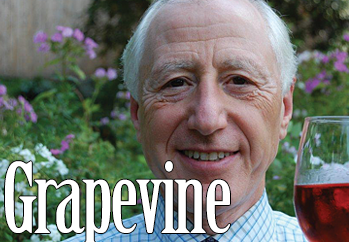The Latest Myth-buster Report for Your Consideration
Opinion Advocates for ideas and draws conclusions based on the author/producer’s interpretation of facts and data.
 In the grand “Bacchusphere” of the wine world, facts and myths swirl around and can become inexplicably intertwined. The distinction between the two sometimes becomes blurred, imperceptible to even the experienced mind. Just tune in to Fox News or MSNBC to understand the fine line between myth and reality: Are we exposed to a reporter’s news story or a talk show host’s opinion? Who is the bearer of truth?
In the grand “Bacchusphere” of the wine world, facts and myths swirl around and can become inexplicably intertwined. The distinction between the two sometimes becomes blurred, imperceptible to even the experienced mind. Just tune in to Fox News or MSNBC to understand the fine line between myth and reality: Are we exposed to a reporter’s news story or a talk show host’s opinion? Who is the bearer of truth?
In the wine world, time seems to be the influencing factor in determining fact versus fiction. It never ceases to amaze me how the mere passage of time can validate a myth.
Many of us are eager to learn more about wine and seek out numerous sources to enhance our understanding and thereby our appreciation of wine. Whether we rely on word of mouth or the media, there are conflicting – mostly anecdotal – accounts that, in my opinion, warrant clarification.
I’ve addressed several of these issues in previous myth-buster columns. Herein is the next installment of wine “truths” that have been questioned by readers and others that I’ve come in contact with in my travels. As in the past, I’ve selected these topics at random and present them in no particular order of importance or relevancy.
- Napa Valley is the epicenter of United States wines.
This was once a truth, but is now an urban myth. Napa Valley still lays claim to the most expensive wines in the United States, but it produces only 4 percent of California wines. (It is the number one tourist attraction in California; Disneyland is second). Wine is commercially produced in all 50 states, but California produces 84 percent of it. New York is a very distant third.
- The United States is not the top consumer of wine in the world.
It depends on how you look at it: statistics or trends. As a nation, we are the largest wine-consuming nation, by far, having passed France and Italy several years ago. In 2023, French and Italian consumption (and population) continues to decline.
However, the more than 20-year growth trend in the United States has also eroded. In 2023, it is expected that wine consumption fell by 2.3 percent.
There is a macro and micro view of consumption. As a nation, we are at the top. As individual consumers, we are in the back of the pack.
Our average annual per capita consumption is 2.71 gallons, or 13 bottles. That’s a bit more than one bottle per month for every man, woman and child in the United States, which pales in comparison to our other favorite beverages. (Bottled water accounts for 46 gallons, soft drinks 43 gallons and beer 19 gallons.)
Who are the top per capita wine consumers? The Portuguese, at over 89 bottles.
The French and Italians consume more than 60 bottles per year. (Doing the math, unlike the Portuguese, French and Italian consumption is more like my personal imbibing: a five-ounce glass per day, on average.)
Overall, the United States barely makes the Top 20 list. Of course, population accounts for the apparent dichotomy in consumption statistics; the United States population base of 334 million dominates Italy (59 million) and France (68 million).
And where do these 13 bottles come from? Surprisingly, to me, domestic wines account for 75 percent of U.S. consumption, according to the Beverage Information Group, a national tracking organization. These statistics include wine consumed at home and at wine bars, restaurants and group events. I have a suspicion that the latter two categories account for a substantial portion of total consumption (restaurant house wines, wedding reception wines and corporate events). The top supplier of the remaining 25 percent is Italy, followed by Australia.
- Men consume more wine than women.
No longer. The trends have changed in the last five years: 56 percent of wine consumers in the United States are now women, who account for 60 percent of the wine purchased annually.
How do these statistics compare to your understanding and personal wine preference profile? Let me know and I’ll publish the results in a future column.
Nick Antonaccio is a 45-year Pleasantville resident. For over 25 years, he has conducted wine tastings and lectures. Nick is a member and program director of the Wine Media Guild of wine journalists. He also offers personalized wine tastings. Nick’s credo: continuous experimenting results in instinctive behavior. You can reach him at nantonaccio@theexaminernews.com.
